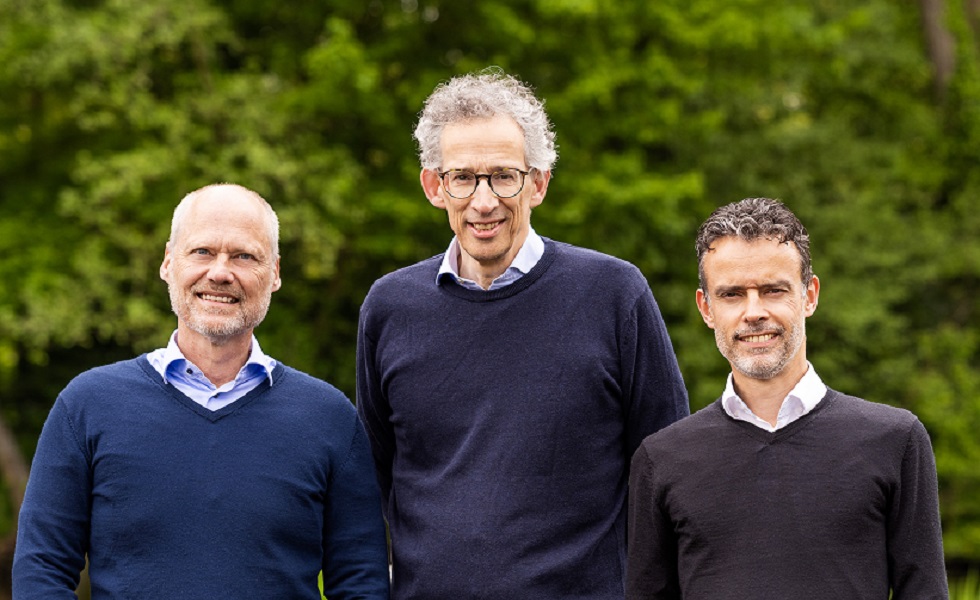Impact Orange Partners: Translating impact targets into concrete positive impact

This article was written in Dutch. This article is an English translation.
There is 'good' and 'less good' capital available. That is the conviction of Gerard Roelofs, Jan Bertus Molenkamp and Michel Iglesias del Sol, who together founded Impact Orange Partners, a startup that focuses on an integrated portfolio approach to impact investing. Their goal is simple: to allocate more institutional capital to impactful investments to preserve the earth and society of tomorrow.
By Bouko de Groot
What is your definition of impact investing?
Gerard Roelofs: 'As a starting point, we adhere to the so-called Theory of Change to assess whether or not an investment is impactful. We ask questions such as: What is the social problem? Will my capital make a difference? What do we want to achieve? How are we going to measure returns and impact? Over what time span are we going to measure and monitor the difference we make? In other words: the impact dimensions intention, additionality, contribution, materiality, measurability, attribution and duration must be visible. That is impact investing.'
Jan Bertus Molenkamp: 'We offer room for a somewhat broad definition of impact. Listed and unlisted investments can create impact. All investments create impact, both positive and negative, and score differently on these impact dimensions.'
How do you see the future of impact investing?
Michel Iglesias del Sol: 'Our prediction is that in 5 to 10 years the institutional investment process will start with impact beliefs from which the investment portfolio is built, instead of seeing impact investing as a separate bowl, as is often the case now. We also foresee the establishment of impact committees, which will later be merged with the regular investment committees.'
Roelofs: 'The Netherlands Advisory Board for Impact Investing (NAB) has conducted a study and expects that in the coming years 6% to 8% of pension investments will be specifically allocated to impact. That is around € 110 billion, a very large amount. We believe that all investments should show some degree of positive impact. We therefore assume a much larger amount. However, much work remains to be done for this. We would like to contribute to that.'
What are the biggest impact investing challenges for your clients?
Molenkamp: 'We recently organized a round table for customers and the following challenges emerged:
- lack of clarity about the definition of impact;
- the place in the investment process (can impact be fully included in the total portfolio, or is it a separate category?);
- the trade-off between impact and return (can impact be quantified and is there a willingness to generate 'less than the market' in return?);
- being able to measure impact in a simple way;
- major differences between supply and demand in the impact investing market;
- the governance of impact investing;
- communication to stakeholders;
- the regulations.
We believe that these challenges should not be an obstacle. Solutions are available, although sometimes they are not yet perfect. It is especially important to just start.'
By working with other impact parties, we as an organization also create more impact.
Have you already had an impact in the short time that your organization has existed?
Iglesias del Sol: 'Yes! From our own point of view, we have generated the greatest impact so far by helping to create some impact initiatives, so on the supply side. But we are of course also active on the demand side and would like more. We help our clients to create impact in three ways. First of all through impact advice. Simply put, by translating objectives into practical portfolios and their design. Second, by helping to measure and monitor the level of impact created. And thirdly, by setting up thematic portfolios. In addition to the climate and energy transition, we have extensive experience with the themes of sustainable agriculture & biodiversity, health, education and circularity & sustainable living. We do not do all this alone, but – in parts – with partners. By working with other impact parties, we as an organization also create more impact. The stone in the pond creates a large, positive impact wave.'
What is possible in the field of impact measurement?
Molenkamp: 'More and more. It is important to realize that impact investing is an activity that you have to measure over a period of time, and not just by looking at the impact of the current portfolio. In addition, it is good to use simple measures and not too many at the same time. However, depicting the impact of an entire portfolio in a consistent manner can be challenging given the many dimensions of impact. Impact KPIs differ per impact theme and per asset class. Impact measurement also has a philosophical tinge: does impact apply over a certain period of time, or can impact be perpetual?'
Roelofs: 'The most important thing is to make a clear link with the intended impact. And there are tools, such as guidance from GIIN on listed shares, the Impact Management Project (IMP) and the IRIS+ framework.'
How do you view impact washing?
Roelofs: 'It is easy to say that impact washing is bad, wrong marketing et cetera. But the potential risk of impact washing should not be a reason for inaction. Due to the (still) lack of clarity of regulations, such as the SFDR and the PAIs, parties are also filling in the definition and measurability of impact themselves.'
Iglesias del Sol: 'As far as we are concerned, an impact investor's strategy should be: record what your definition is, record your Theory of Change per component or investment and be specific about positive (and negative) impact.'
What kind of innovative developments are currently taking place in the impact investing arena?
Molenkamp: 'There are all kinds of promising developments going on. An example is the 3D framework and the trade-off between return, risk and impact, even though this is multidimensional. Another example is the use of geodata, which, among other things, can be used to provide insight into the physical climate risks of an investment portfolio.'
Roelofs: 'We also think that the focus will gradually shift from the energy transition to biodiversity. In fact, climate change is only one of five causes of biodiversity loss. We think impact investors could pay more attention to this.'
|
SUMMARY More institutional capital can go to impactful investments. Impact investing still presents many challenges, but more is possible and both demand and supply are growing rapidly. It is important to have a concrete definition and a clear link between intended goals and KPIs. |









